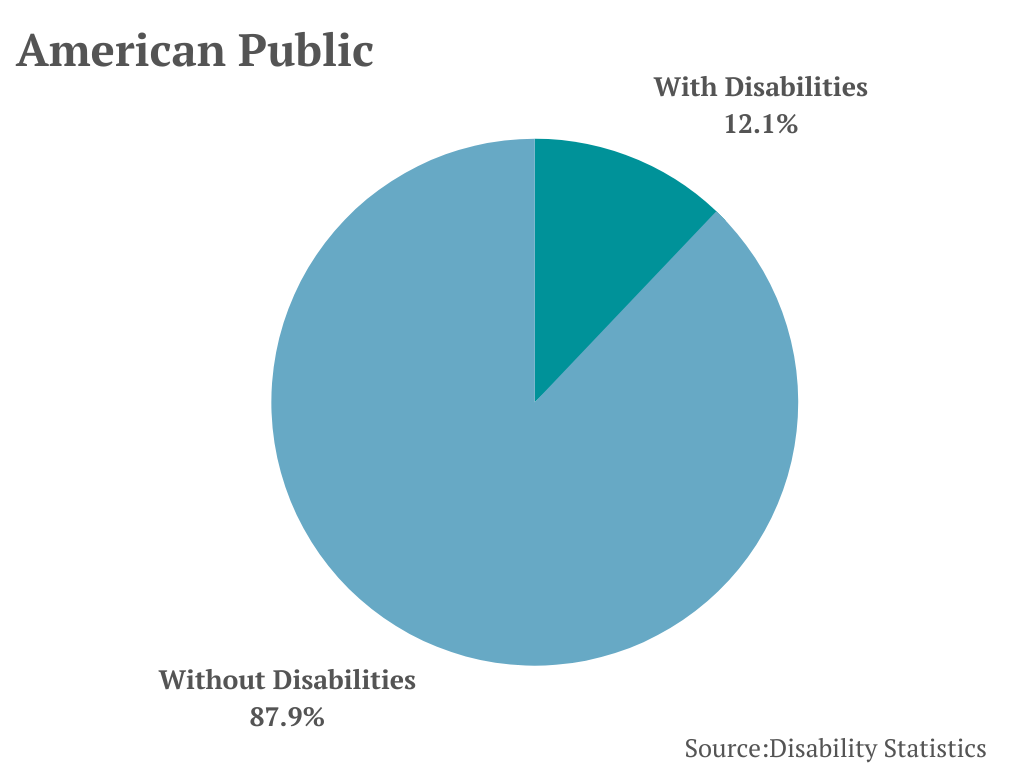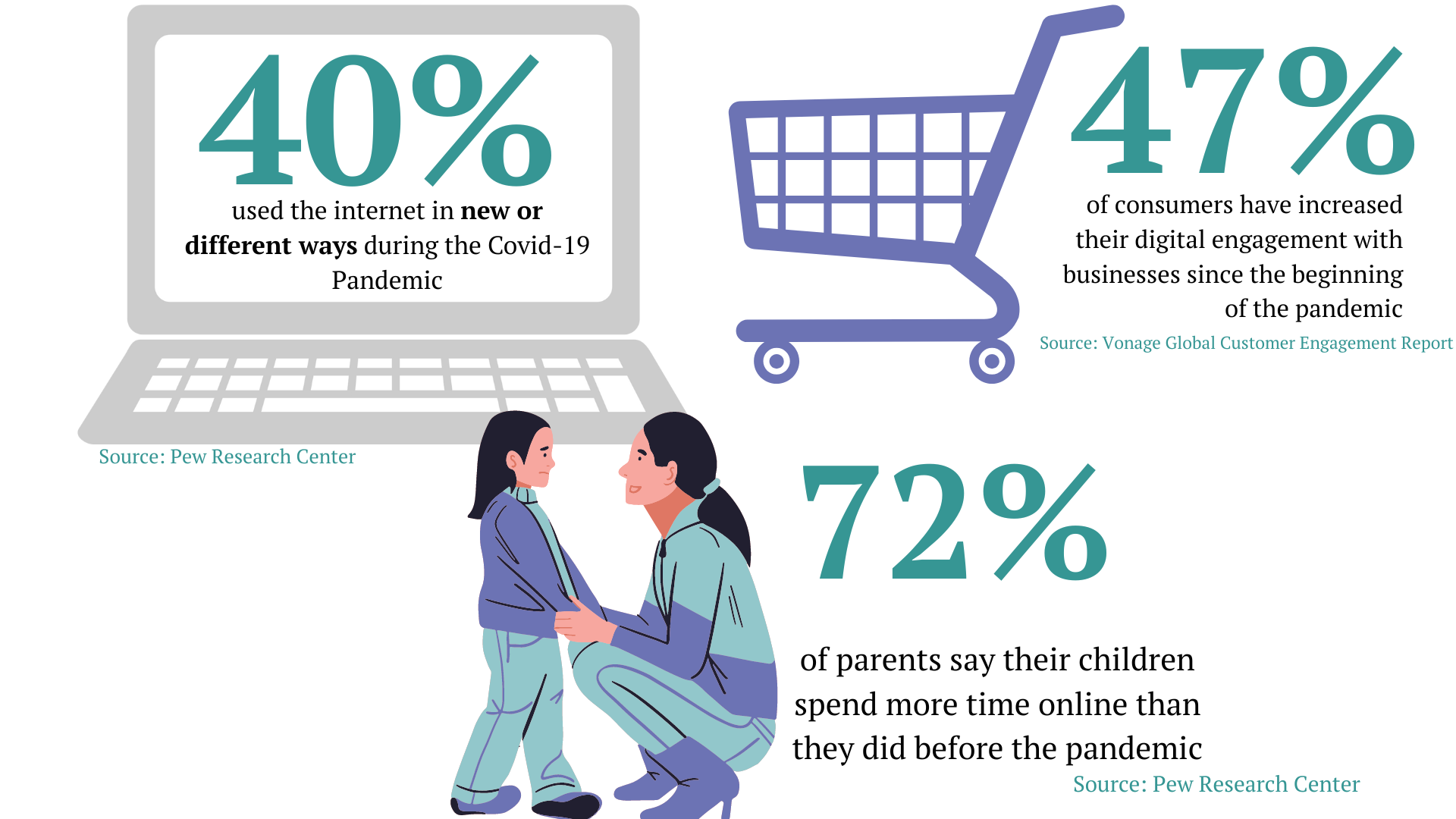It's time to work towards digital futures for museums.

As the world confronted the challenges of Covid-19, our relationship with technology and online experiences changed. Museums, as public-serving institutions, can benefit their mission and extend their reach by offering more immersive, active, and accessible online content. Parents are looking for more online educational opportunities for their kids, people with disabilities may find more enrichment online with physical barriers to access the museum in person, and people from across the world can tune into museum offerings via the internet. It's time to start thinking about how art experiences are best made online.
While some larger museums, such as the Smithsonian Museums, do have a wealth of digital content, most museums still place almost all of their emphasis on physical collections. The extent of most museum online offerings is a few digital collections.
Not only could enhanced digital collections reach a wider audience, but they would allow access to works that museums don't have the space to display.

Photo by Robin Schreiner on Unsplash

Photo by Andrew Neel on Unsplash
Photo by Andrew Neel on Unsplash
The International Council of Museums (ICOM), defines museum as "a nonprofit making, permanent institution in the service of society and of its development, and open to the public, which acquires, conserves, researches, communicates and exhibits, for purposes of study education and enjoyment, material evidence of humans and their environment."
With such limited public access to collections, can museums really claim to be in service of the public, or claim true stewardship of their collections?
Putting these collections online for public view not only honors the works, but allows for more education, inspiration, and public knowledge.
Who is looking for digital museum content, and why?

Source: Culture Track
Source: Culture Track
Parents with kids at home are looking for online activities to engage and learn with their children, especially since the Covid-19 lockdown changed the ways that we learn and interact digitally, which will be discussed later.
There are additional benefits cited by those who have enjoyed online offerings of museums.
The largest benefit of online offerings was the access to more detailed information. Again, the value of online museum content is very centered in the public's desire to learn more about the works at their own pace.
We might reach individuals with disabilities more effectively with revamped online content.


Museums have a lot of catching up to do when it comes to accessibility. A 2008 study of museum visitors with disabilities showed that aside from physical access to various spaces in the museum, visitors with disabilities ran into discomfort and exclusion on the part of staff attitudes and feeling unwelcome in the space entirely. They experienced distinct difficulties in "achieving a full museum experience."
"People with disabilities are not able to experience the museum as they wish, despite museum efforts toward becoming accessible to all."

Other barriers to museum attendance

Digital offerings address four of the five largest barriers to the attendance of cultural entities.
Allowing audiences to interact online would soothe concerns about Covid-19 and public safety, as they could visit from the comfort of their homes.
It also eliminates the hassle of getting to the museum.
As mentioned earlier, online collections allow museums to put on view pieces that otherwise aren't currently available, which addresses the issue of "nothing new to see/do".
Covid-19 Changed Things.

Covid-19 not only changed the frequency of our online engagement but changed how we spend our time online. As audiences increasingly look to the internet for entertainment and education, museums are struggling to catch up with their demand.
As museums unexpectedly closed their doors in March 2020, they scrambled to find ways to keep their audiences engaged and provide content online. Since then, we haven't seen widespread strategizing or improvement in digital offerings, nor have we seen case studies on the effectiveness of the online content produced during lockdowns.

Via the Louvre Museum
Via the Louvre Museum
What Kind of Experiences Are Out There?





How museum managers can start implementing more digital experiences:
- Start writing digital programming into your budget
- Include it in your next strategic plan
- Get feedback from your audiences on your current digital offerings
- Benchmark other institutions

Resources for Museum Managers

Photo by Jessica Lewis on Unsplash
Photo by Jessica Lewis on Unsplash
Virtual Reality & Virtual Tours
Best Examples of Museums Using VR - MuseumNext
VR Headset Reviews - XR Today
10 Amazing Virtual Museum Tours - Virtualiteach

Photo by Kadir Celep on Unsplash
Photo by Kadir Celep on Unsplash
Implementing Online Collections
The Ultimate Guide to Virtual Museum Resources, E-Learning, and Online Collections - MCN
Managing Digital Collections - MuseumNext

Photo by Kelly Sikkema on Unsplash
Photo by Kelly Sikkema on Unsplash
Budgeting for Digital Assets
How Much Will Museum Digital Projects Cost Me? - Lucidea
Digitizing for Preservation and Access: Best Practices for Every Budget - Sustainable Heritage Network
Sources
“A Decade of Arts Engagement: Findings from the Survey of Public Participation in the Arts, 2002-2012.” National Endowment for the Arts, January 2015.
Bambury, Steve. “10 Amazing Virtual Museum Tours.” virtualiteach, August 20, 2017. https://www.virtualiteach.com/post/2017/08/20/10-amazing-virtual-museum-tours.
Bradley, Kimberly. “Why Museums Hide Masterpieces Away.” Accessed October 9, 2022. https://www.bbc.com/culture/article/20150123-7-masterpieces-you-cant-see.
“Coronavirus Research Series 4: Media Consumption and Sport.” Global Web Index, April 2020. https://www.gwi.com/hubfs/1.%20Coronavirus%20Research%20PDFs/GWI%20coronavirus%20findings%20April%202020%20-%20Media%20Consumption%20(Release%204).pdf.
“Culture Track 2017 Study.” La Placa Cohen. Accessed September 28, 2022. https://2017study.culturetrack.com/.
“Digitizing for Preservation and Access: Best Practices for Every Budget | The Sustainable Heritage Network.” Accessed October 9, 2022. https://sustainableheritagenetwork.org/digital-heritage/digitizing-preservation-and-access-best-practices-every-budget.
Dilenschneider, Colleen. “The Five Biggest Barriers to Attending Cultural Entities in 2020 (DATA).” Colleen Dilenschneider, September 16, 2020. https://www.colleendilen.com/2020/09/16/the-five-biggest-barriers-to-attending-cultural-entities-in-2020-data/.
“Disability and Employment Status Report for the United States, 2012.” Accessed October 9, 2022. https://disabilitystatistics.org/reports/2012/English/HTML/report2012.cfm.
Fabrikant, Geraldine. “The Good Stuff in the Back Room.” The New York Times, March 12, 2009, sec. Arts. https://www.nytimes.com/2009/03/19/arts/artsspecial/19TROVE.html.
“Key Findings From Wave 2, Culture Track.” LaPlaca Cohen, November 23, 2021. https://s28475.pcdn.co/wp-content/uploads/2021/11/CCTT-Key-Findings-from-Wave-2.pdf.
Longo, Eric. “The Ultimate Guide to Virtual Museum Resources.” MCN, March 15, 2020. https://mcn.edu/a-guide-to-virtual-museum-resources/.
“Louvre Museum Official Website.” Accessed October 9, 2022. https://www.louvre.fr/en.
Mcclain, Colleen, Emily a Vogels, Andrew Perrin, Stella Sechopoulos, and Lee Rainie. “The Internet and the Pandemic.” Pew Research Center: Internet, Science & Tech (blog), September 1, 2021. https://www.pewresearch.org/internet/2021/09/01/the-internet-and-the-pandemic/.
“Museum Definition - International Council of Museums -International Council of Museums.” Accessed October 9, 2022. https://icom.museum/en/resources/standards-guidelines/museum-definition/.
Poria, Yaniv, Arie Reichel, and Yael Brandt. “People with Disabilities Visit Art Museums: An Exploratory Study of Obstacles and Difficulties.” Journal of Heritage Tourism 4, no. 2 (May 1, 2009): 117–29. https://doi.org/10.1080/17438730802366508.
Richardson, Jim. “Virtual Reality Is a Big Trend in Museums, but What Are the Best Examples of Museums Using VR?” MuseumNext, July 31, 2021. https://www.museumnext.com/article/how-museums-are-using-virtual-reality/.
———. “When ‘Digital’ Meets Collection: How Do (Traditional) Museums Manage?” MuseumNext, March 6, 2019. https://www.museumnext.com/article/when-digital-meets-collection-how-do-traditional-museums-manage/.
Vonage. “Half of Consumers Have Increased Digital Engagement with Businesses Since Start of Pandemic, with Preference for Video Chat Climbing 300%, Vonage Research Reveals.” Accessed October 9, 2022. https://www.prnewswire.com/news-releases/half-of-consumers-have-increased-digital-engagement-with-businesses-since-start-of-pandemic-with-preference-for-video-chat-climbing-300-vonage-research-reveals-301418908.html.
Woods, John. “The Best VR Headsets for Business in 2021.” XR Today, January 27, 2021. https://www.xrtoday.com/virtual-reality/the-best-vr-headsets-for-business-in-2021/.



